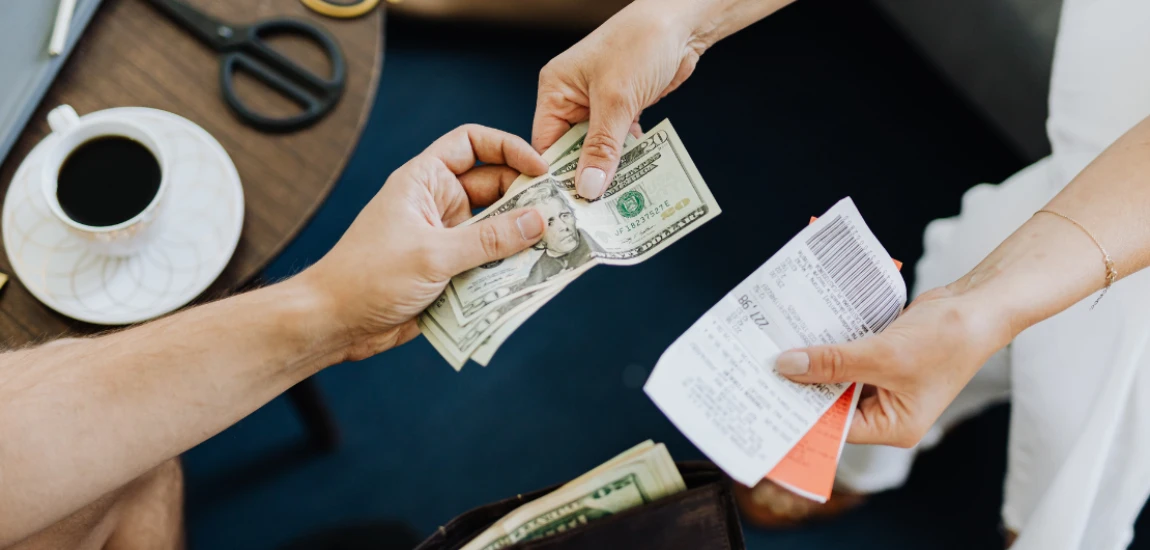Markets Where You Pay With Something Other Than Money

Most of us swipe a card, tap a phone, or hand over paper bills without thinking twice. But around the world, there are still markets where money is not the main form of exchange. Instead, people trade goods, services, and even time. These spaces aren’t just quirky cultural relics; they are living systems that reveal how humans adapt, survive, and build communities.
Visiting such markets as a traveler is like stepping into a parallel economy—one that is more personal, more connected, and less tied to numbers on a screen. You’ll find barter markets in Mexico, time banks in Spain, salt blocks traded like gold in Ethiopia, and even skill-based exchange networks in the United States. Each of these markets operates on values that challenge our assumptions about wealth, fairness, and human need.
Exploring them not only teaches us about culture but also makes us question: What is value really worth? And how much of our lives depend on trust, reciprocity, and community over cold, hard cash?
Let’s dive into six extraordinary examples of markets where you pay with something other than money.
Barter Markets in Oaxaca, Mexico
In the villages of Oaxaca, Mexico, traditional barter markets—“tianguis de trueque”—are still alive. Dating back to pre-Hispanic times, these markets operated long before pesos, banks, or digital wallets existed. The system is simple: people bring what they have and exchange it for what they need, without money involved.
A woman may bring a basket of corn tortillas and exchange them for beans. A potter might trade handmade clay vessels for fresh chilies. Farmers bring eggs or livestock and swap them for textiles or household goods. The system is based on negotiation and mutual agreement rather than fixed prices.
What’s remarkable is the cultural resilience behind these markets. Despite centuries of colonization, modernization, and globalization, many Indigenous communities in Oaxaca have preserved barter as part of their identity. It isn’t about nostalgia—it’s practical. In remote villages, where cash is scarce or where trust in formal markets is low, barter creates a safety net for survival.
Travelers who stumble into one of these barter days quickly realize it’s not just commerce—it’s community in action. Barter reinforces social bonds, since people know each other and often trade repeatedly with the same families. The value isn’t only in the goods exchanged but in the trust and relationships maintained.
If you’re visiting Oaxaca, you might see barter markets during festivals or in weekly town squares. While tourists are usually welcomed as observers, it’s wise to come with respect. If you want to participate, bringing something small but meaningful—like handmade crafts or packaged foods from your culture—may spark friendly exchanges.
Oaxaca’s barter markets remind us that even in today’s hyper-digital age, human societies thrive when they keep ancient traditions alive. They prove that wealth isn’t always about numbers—it’s about what you can share and receive in return.

Time Banks in Spain: Hours Instead of Euros
In many Spanish towns and cities, you’ll find time banks (bancos de tiempo)—markets where the currency isn’t euros but hours. The concept is simple: one hour of your time equals one hour of someone else’s time, regardless of what you’re offering.
For example, if you spend an hour tutoring someone in English, you earn one hour of credit. You can then “spend” that credit on another service, such as getting help fixing a bike, babysitting, or learning guitar. The exchange is recorded in a community ledger so everyone’s contributions are balanced fairly.
The philosophy behind time banks is rooted in equality and social solidarity. Unlike traditional economies, where certain professions or skills are valued more highly, time banks operate on the belief that everyone’s time is equally important. An hour of cleaning is worth the same as an hour of legal advice.
This approach has social as well as economic benefits. In Spain, where time banks grew in popularity during economic downturns, they allowed communities to support one another when money was tight. Today, they remain a way for people to connect, share skills, and feel useful, particularly for the unemployed, retirees, or those seeking community ties in a new city.
For travelers, time banks are fascinating not just as an alternative economic system but as a cultural exchange tool. Imagine spending your afternoon teaching someone English conversation and, in return, getting a guided walking tour of their city or a homemade Spanish cooking class. It turns travel into an exchange of human experiences, not just money.
The beauty of Spain’s time banks lies in the lesson they teach: wealth doesn’t come only in euros or dollars but in the hours you dedicate to others.

Salt as Currency in Ethiopia’s Afar Region
In Ethiopia’s remote Afar region, you’ll see a sight that looks like it belongs to the pages of history: long caravans of camels loaded with rectangular slabs of salt, trudging across the desert toward distant markets. Known as amole, these salt blocks once served as one of the world’s earliest currencies.
The Danakil Depression, one of the hottest places on earth, is rich in salt flats. For centuries, Afar men have carved the salt into blocks, strapped them to camels, and traveled for days to trade them in markets. In exchange, they receive essentials like grain, livestock, and tools.
Even as Ethiopia modernized and adopted paper currency, amole retained symbolic and sometimes practical value in rural economies. Traders still recognize salt blocks as a medium of exchange, particularly in communities where access to formal banks is limited. Salt, after all, is essential for survival—not just for food but for livestock health.
For travelers, witnessing a salt caravan is like stepping into another world. The desert landscapes are surreal, and the endurance of the traders, who walk for days under brutal sun, highlights the human spirit of perseverance. Visiting the markets where amole is traded offers a firsthand glimpse into how geography shapes economy.
What makes this example so profound is the reminder that currency begins with human need. Long before digital coins or stock exchanges, value was tied to resources that sustained life. In Ethiopia, salt was not only a seasoning—it was survival, status, and wealth.
For modern visitors, the Afar salt markets reveal a timeless truth: value doesn’t have to be abstract numbers on a screen. Sometimes, it’s as simple and tangible as a block of salt.

Trueque Clubs in Argentina
In 2001, Argentina suffered one of the worst economic collapses in its history. Banks froze accounts, unemployment soared, and millions of families found themselves unable to buy food or basic goods. Out of this desperation, trueque clubs (barter clubs) emerged.
These were neighborhood gatherings where people brought what they could produce—homemade bread, clothing, crafts, or vegetables—and exchanged them for what they needed. Over time, the system became more organized, with participants creating vouchers called “credits” to facilitate trade across larger networks.
At its peak, millions of Argentinians were involved in trueque clubs, forming one of the largest barter systems in modern history. For many families, it was the only way to survive, proving how resilient communities can be in times of crisis.
Although many barter clubs faded as the economy recovered, some still exist today as alternatives for people seeking independence from unstable financial systems. They also serve as a reminder that community-driven economies can emerge almost overnight when money fails.
For travelers, learning about Argentina’s trueque clubs offers a powerful history lesson. It shows how quickly social innovation can arise under pressure and how barter isn’t just a quirky tradition but sometimes a lifeline in times of collapse.
If you visit Argentina today, you may still find local barter markets in small towns or among community groups. While they may look modest compared to their early-2000s heyday, they carry with them the memory of resilience and collective survival.
The Argentine barter story teaches us that sometimes, when formal economies collapse, human trust and creativity build entirely new ones.

Ithaca HOURS in New York, USA
In the 1990s, the small college town of Ithaca, New York, launched one of the most famous local currencies in the United States: Ithaca HOURS.
One “HOUR” was pegged to the value of one hour of labor, estimated at $10. Locals could use HOURS to buy vegetables at farmers’ markets, hire carpenters, or even pay for medical visits. Thousands of individuals and businesses participated, making it one of the most successful experiments in community currency.
The goal was to keep money circulating within Ithaca, strengthening the local economy and valuing all forms of work fairly. Unlike traditional money, which often leaves small towns for national or international corporations, Ithaca HOURS ensured that wealth stayed local.
Although the project eventually declined, it inspired similar local currency initiatives around the world. For visitors, Ithaca HOURS serve as an inspiring case study in how small communities can redefine wealth and resist the pull of globalized cash systems.
It also challenges the assumption that only governments can issue money. In Ithaca, everyday people created a system that worked because they trusted each other and valued their shared commitment to community resilience.
For travelers, exploring Ithaca isn’t just about its famous gorges and natural beauty—it’s also a chance to learn how communities innovate economically.

Other Unique Examples Around the World
Papua New Guinea Shell Money: Some tribes still use shell necklaces or beads as traditional currency during ceremonies and trade.
Kenya’s LETS Systems: Local Exchange Trading Systems allow participants to swap services through community credit.
Japan’s Fureai Kippu: A “caring currency” where people earn credits by helping the elderly, which they can later use for their own care needs.
These systems might seem unusual to outsiders, but they highlight one truth: money is just a tool, not a necessity. Communities continually invent creative ways to measure and exchange value.

Tips for Travelers Visiting Alternative Markets
Do Your Research – Some barter markets are primarily local traditions, not tourist attractions.
Bring Something to Share – Small gifts, skills, or food items can open doors.
Respect the Community – Don’t treat the market as entertainment; understand its cultural or survival role.
Engage in Conversation – Ask questions, learn stories, and see what exchange really means beyond material goods.
Reflect on Value – Think about how your own culture defines worth and how it compares.





